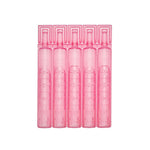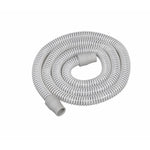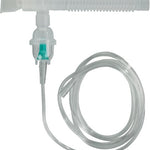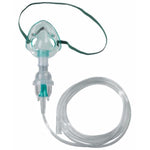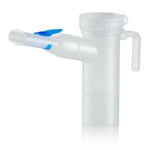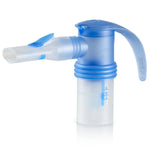You have no items in your shopping cart.
What Medications are Used in a Nebulizer?
If you or a family member has a lung disease, such as emphysema, chronic bronchitis or asthma, you might be prescribed breathing treatments. Breathing treatments via a nebulizer are often given in a hospital setting to help ease symptoms of lung disease. The good news is, treatments can also be done at home.
Nebulized breathing treatments are an effective way to ease common symptoms, such as shortness of breath and wheezing. They typically take between ten and 15 minutes to complete.
Before getting started with breathing treatments, it’s helpful to understand what kind of medication may be prescribed for use in a nebulizer. The type of medication recommended, as well as the dose, may vary based on symptoms and the condition being treated. The following classifications of medications may be prescribed for use in a nebulizer:
Fast-Acting Bronchodilators: Fast-acting bronchodilators are the most common medication given through a nebulizer. Certain respiratory illnesses, such as asthma, can cause the airways to narrow or constrict. Narrowing of the airways can lead to wheezing, chest tightness and trouble breathing. The Fast-acting bronchodilators relax the smooth muscles of the airway and lead to dilation. They are considered rescue medications because they act quickly to treat symptoms. As the airways dilate or open, breathing becomes easier. Side effects of fast-acting bronchodilators may include increased heart rate, shakiness and headache.
Steroids: Steroids are often prescribed to treat the inflammation that can develop with lung diseases, such as COPD. Although steroids can be given orally or intravenously, they may also be given via a nebulizer for home use. Inhaled steroids may have less systemic side effects than those given orally. When side effects do occur, they may include a sore throat, hoarseness and an oral yeast infection. Rinsing your mouth after a nebulized treatment can decrease the chances of developing a yeast infection in the mouth.
Long-acting Bronchodilators: A long-acting bronchodilator is also sometimes prescribed to treat asthma and other chronic lung diseases. It helps by decreasing constriction of the airways for up to 12 hours. But unlike fast-acting bronchodilators, long-acting medications are not used to provide quick relief of sudden symptoms. Instead, it is used to control asthma and prevent an exacerbation of symptoms. Side effects of long-acting bronchodilators include increased heart rate, tremors and anxiety.
Mucolytics: People with lung disease often have an increase in mucus production. Mucolytics are sometimes administered through a nebulizer to thin the mucus so that it can be coughed out. Side effects of inhaled mucolytics can include wheezing, nausea and irritation of the mouth.
What Medications are Used in a Nebulizer?
If you or a family member has a lung disease, such as emphysema, chronic bronchitis or asthma, you might be prescribed breathing treatments. Breathing treatments via a nebulizer are often given in a hospital setting to help ease symptoms of lung disease. The good news is, treatments can also be done at home.
Nebulized breathing treatments are an effective way to ease common symptoms, such as shortness of breath and wheezing. They typically take between ten and 15 minutes to complete.
Before getting started with breathing treatments, it’s helpful to understand what kind of medication may be prescribed for use in a nebulizer. The type of medication recommended, as well as the dose, may vary based on symptoms and the condition being treated. The following classifications of medications may be prescribed for use in a nebulizer:
Fast-Acting Bronchodilators: Fast-acting bronchodilators are the most common medication given through a nebulizer. Certain respiratory illnesses, such as asthma, can cause the airways to narrow or constrict. Narrowing of the airways can lead to wheezing, chest tightness and trouble breathing. The Fast-acting bronchodilators relax the smooth muscles of the airway and lead to dilation. They are considered rescue medications because they act quickly to treat symptoms. As the airways dilate or open, breathing becomes easier. Side effects of fast-acting bronchodilators may include increased heart rate, shakiness and headache.
Steroids: Steroids are often prescribed to treat the inflammation that can develop with lung diseases, such as COPD. Although steroids can be given orally or intravenously, they may also be given via a nebulizer for home use. Inhaled steroids may have less systemic side effects than those given orally. When side effects do occur, they may include a sore throat, hoarseness and an oral yeast infection. Rinsing your mouth after a nebulized treatment can decrease the chances of developing a yeast infection in the mouth.
Long-acting Bronchodilators: A long-acting bronchodilator is also sometimes prescribed to treat asthma and other chronic lung diseases. It helps by decreasing constriction of the airways for up to 12 hours. But unlike fast-acting bronchodilators, long-acting medications are not used to provide quick relief of sudden symptoms. Instead, it is used to control asthma and prevent an exacerbation of symptoms. Side effects of long-acting bronchodilators include increased heart rate, tremors and anxiety.
Mucolytics: People with lung disease often have an increase in mucus production. Mucolytics are sometimes administered through a nebulizer to thin the mucus so that it can be coughed out. Side effects of inhaled mucolytics can include wheezing, nausea and irritation of the mouth.


